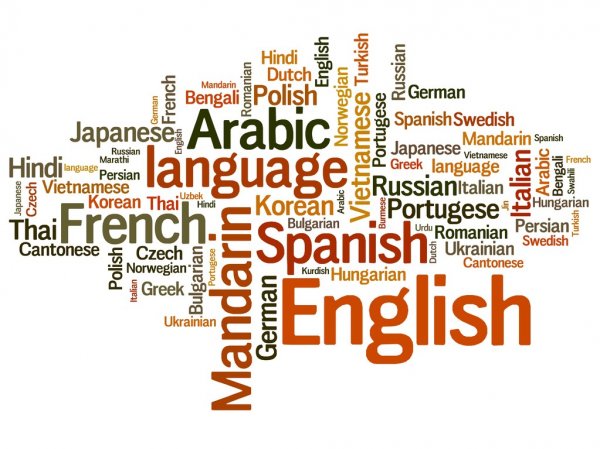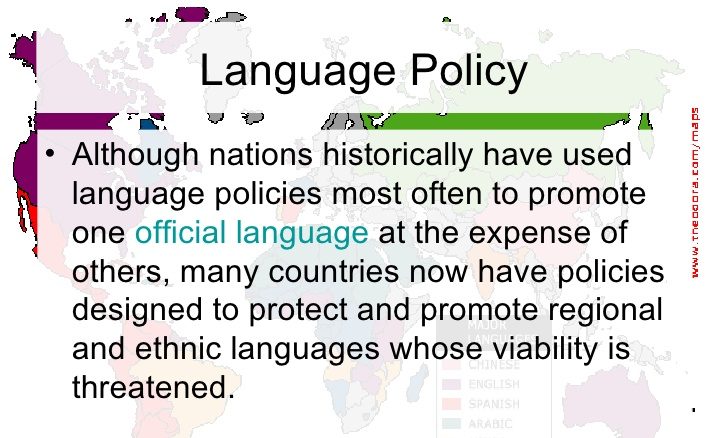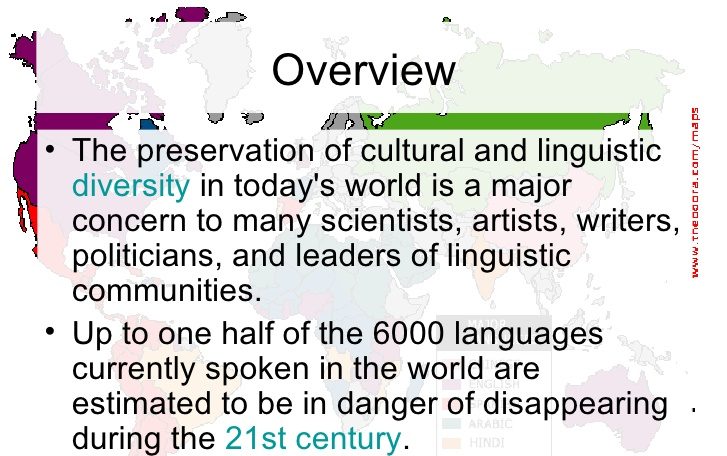
 Language policy is considered source of influence and supremacy. It is also foundation of power of media, administration, commerce, education and other sectors.
Language policy is considered source of influence and supremacy. It is also foundation of power of media, administration, commerce, education and other sectors.
By Shoukat Lohar
Pakistan is a land of multilingual languages. There are about 57 indigenous languages in Pakistan. However the state has always been supportive to either English or Urdu. Local languages are only considered of lower status, substandard and cultural shame. Thus these are becoming dying languages.
English as an official and Urdu as a National language are the tools of power of different areas such as government, education, media, commercial and private sectors. Pakistan language policy has been unpredictable from time to time.
Different policies had been given regarding languages like policy about English, Urdu and Indigenous Languages. There was Language Policy (1050), Ayub Khan’s Language Policy, Bhutto’s Language Policy and General Zia Ul Haq’s Language Policy. Neither policy is seen to have resolve language issues. It is possible only by encouraging multilingualism. In multilingualism Pakistani languages will survive as cultural capital rather than cultural humiliation.
 Language policy is a supportable dimension in the development of a certain country. Language reflects nation’s uniqueness, identity, culture, belief and philosophy. In any country, if language policy is identical and given equal importance to national and all indigenous languages, that nation and people prosper with the passage of time, people live with harmony and become model for other nations in the world.
Language policy is a supportable dimension in the development of a certain country. Language reflects nation’s uniqueness, identity, culture, belief and philosophy. In any country, if language policy is identical and given equal importance to national and all indigenous languages, that nation and people prosper with the passage of time, people live with harmony and become model for other nations in the world.
Language policy is considered source of influence and supremacy. It is also foundation of power of media, administration, commerce, education and other sectors. In every age, language becomes identification of people, their literature both written and verbal, their society and their social values. In Pakistan, since her birth language policy has been facing various complications.
We have six major languages such as Punjabi, Sindhi, Balochi, Urdu, Pashto and Siraiki and there are estimated fifty eight minor languages. Urdu is national language of Pakistan with eleven million mother tongue speakers and 105 million people use Urdu as a second language.
First language education conference was held about four month after independence in Karachi from November 27 to December 1, 1947. In it Urdu is mentioned as compulsory and common source of communication to all people of Pakistan. Further, it will be taught as a compulsory language in schools but it is not mentioned in the document that Urdu will be the main source of instructions in schools. The matter of fact is that Urdu was already was being used in Punjab, N.W.F.P, Baluchistan and Kashmir. In Sindh province scenario was upside down as from those days till now it is being used as a medium of instructions in schools and at official level.
After independence huge migration took place and refugees were especially settled in Sindh province, and because of this, demographic situation changed in cities of Sindh. Now there was more need of schools. Muhajirs wanted Urdu or English as medium of instruction rather than Sindhi. On July 23, 1948, when Karachi was separated administratively from rest of Sindh, the number of schools in Sindh was – Sindhi medium schools 57, Urdu medium 69 and Gujarati medium 17. This figure shows that Sindhi schools decreased as compared to Urdu medium.
 Before 1947 number of Urdu speakers was less as compared to other indigenous languages. It is said that after independence British felt no harm to support Urdu. Educated class and bureaucrats of Punjab, N.W.F.P and Kashmir were already using Urdu.
Before 1947 number of Urdu speakers was less as compared to other indigenous languages. It is said that after independence British felt no harm to support Urdu. Educated class and bureaucrats of Punjab, N.W.F.P and Kashmir were already using Urdu.
Again, the article 251 and clause (1) of 1973 Constitution, envisaged that Urdu is national language of Pakistan and within 15 years arrangement will be made to replace English with Urdu as official status.
In the early days of Pakistan, major opposition to Urdu was from Bengalis. The Bengali bureaucrats and intellectuals thought that if Urdu becomes national language of Pakistan it would be the language of main areas such as administration, education, media and military. Moreover, English was already being used by elite class and Bengali would not get desired status and it would get only the status of Provincial Language, and they would be deprived share in power in central government, bureaucracy or in the military.
In other areas of Pakistan like Punjab, N.W.F.P, Baluchistan and Western Punjab the Urdu was considered as a symbol of integration. In West Pakistan, it was only in Sindh that Urdu faced opposition.
According to Sahibzada Abdul Qayyum report of 1932 Pakhtuns wanted to instruct their children in Urdu rather than Pashto and again N.W.F.P government in 2003 had chosen Urdu for government and educational level instead of Pashto. In addition such type of phenomena is seen in Baluchistan where in 1990 Balochi, Brahvi and Pashto were made medium of instruction in government schools but from 1992 mentioned languages are considered optional.
The discussed scenario reflects that indigenous or minor languages are ignored due to preplanned language policy, which has given birth to the phenomena known as Urdu Imperialism in Pakistan. Urdu as a national language has two roles. One due to resistance, ethnic groups has paid attention to their languages. Making their languages strengthened by progressive planning such as writing books, dictionaries and grammar books in their languages. Second is promotion of value of multilingualism. Thus, Urdu in this sense on the one hand has strengthened the ethnicity and on the other hand has threatened the linguistic and cultural diversity of the country as well.
In constitution 1973, English is considered as an official language. It is also mentioned that national language will replace official language and estimated time was mentioned fifteen years. After independence elite class of Pakistan followed traditions of British and found English language modern, efficient and language of intellectual and educated class. Army officers and civil services officers’ also shaped themselves according to the life style of British. In this shape British generation was dominated in armed forces of Pakistan till 1971 like Stephen Cohen and Major General A.O Mitha. Elite class also continued same tradition because it was main separate line from middle and lower classes. In addition, those bureaucrats who came from middle and lower classes, supported, strengthened and preserved English. In this way Elite invested in English Medium Schools and preferred all subjects should be taught in English. This type of attitude in future gave birth another new generation who promoted English even intensely. The matter of fact is that present situation about English is quite different. If someone thinks to abolish English, it is useless because children of affluence class getting education in British Education System (BES) “A” Level and “O” within and out of the country.
 Globalization is one of the major factors to make English powerful and dominated and English has more and more demand than ever before. In 1950 Armed Forces of Pakistan established Cadet Colleges Education System (CCES) which is based on totally British School System (BSS). Students from middle and lower classes wanted to seek admission in such school system but they unable to get admission because they were from Urdu medium schools. This scenario frustrated them and in 1960 protested against such education system. A committee was made by government to solve their problem. The committee gave decision that such school system is violation constitution and all citizens have equal rights under constitution (constitution 1962, paragraph 15 and right no.vi). Further, commission was convinced that such school systems are to fill the posts of military and civil services of the country.
Globalization is one of the major factors to make English powerful and dominated and English has more and more demand than ever before. In 1950 Armed Forces of Pakistan established Cadet Colleges Education System (CCES) which is based on totally British School System (BSS). Students from middle and lower classes wanted to seek admission in such school system but they unable to get admission because they were from Urdu medium schools. This scenario frustrated them and in 1960 protested against such education system. A committee was made by government to solve their problem. The committee gave decision that such school system is violation constitution and all citizens have equal rights under constitution (constitution 1962, paragraph 15 and right no.vi). Further, commission was convinced that such school systems are to fill the posts of military and civil services of the country.
Now-a-days such school systems are even more furnished, well developed and found in all provinces of the country. Thus such education system is superior to local government education system. Their budget comes from fesses and government also gives additional grants. It is researched that in Madrassas average cost per student is about 5,714 and contribution of state is very little. In Urdu medium schools the average cost per student per year is about 2264. In Elite English medium schools per student cost is about 96,000 and it is not mentioned clearly that state supports them but give some land in cantonments. Moreover, supporting such school system Pakistan is promoting globalization and helping maintaining the supremacy of English. In this way its key effect is on local school system, local languages and creating linguistic and cultural diversity in the country. In addition, it is also cause to increasing poverty and unemployment because superior jobs are in the hands of those who study in English elite school systems. According to Philipson (1992) English is known as the greatest power in the world and British has extended it in its colonies such as Asia and Africa when British withdrew these colonies English has spread in the world due to American politics, economy, military power and media. At international level doors of the jobs are opened for those who are well in English.
_____________________
About the Author
